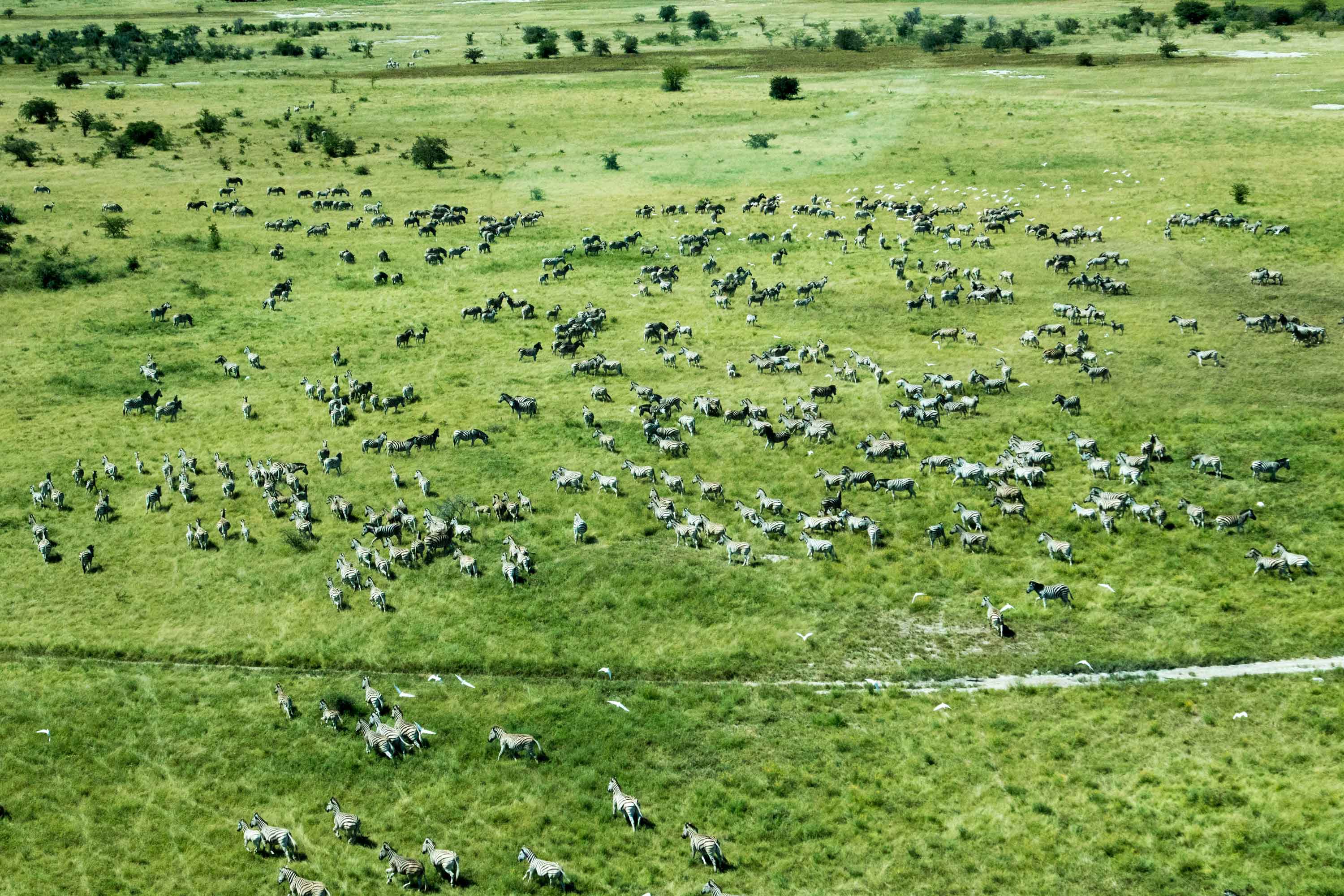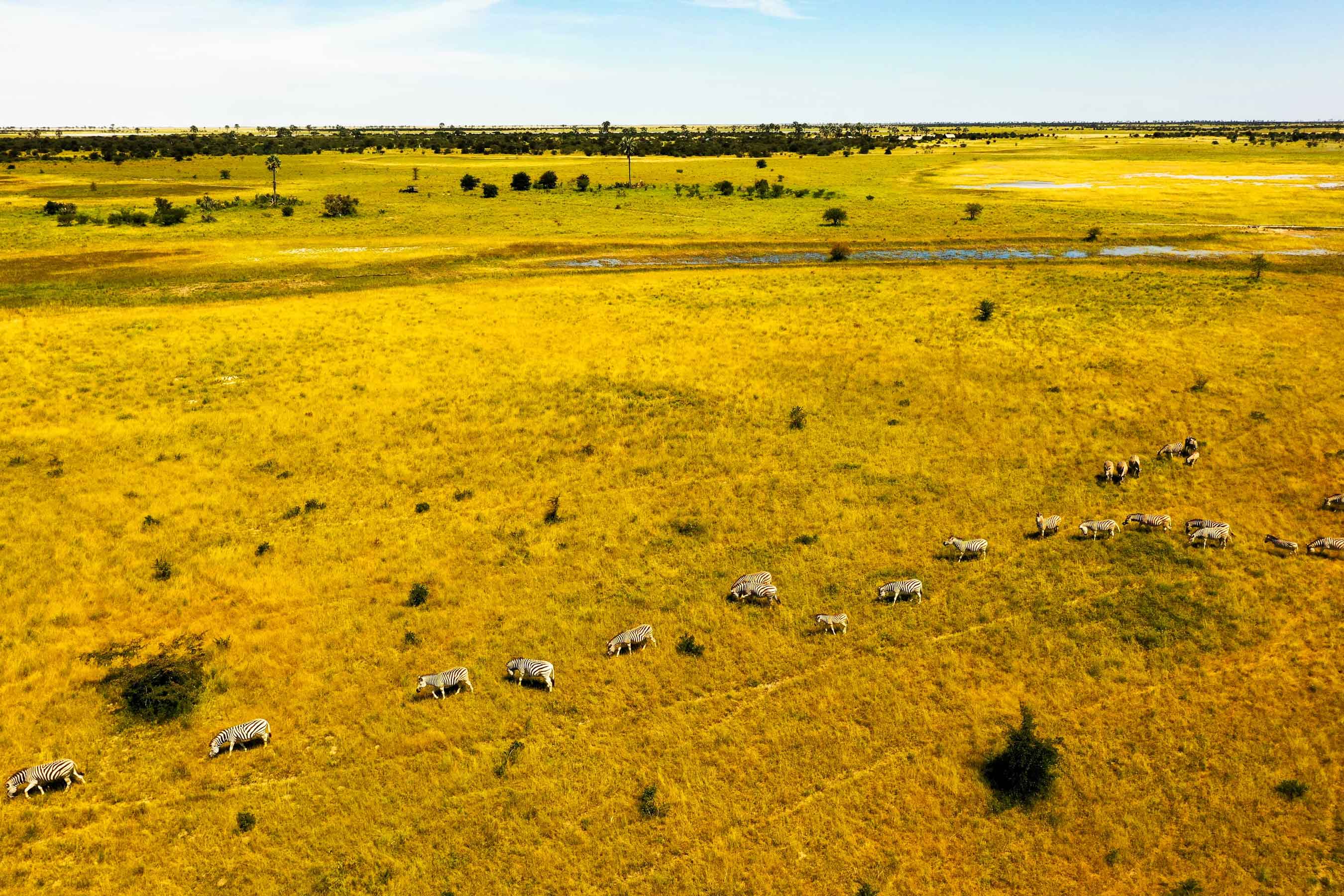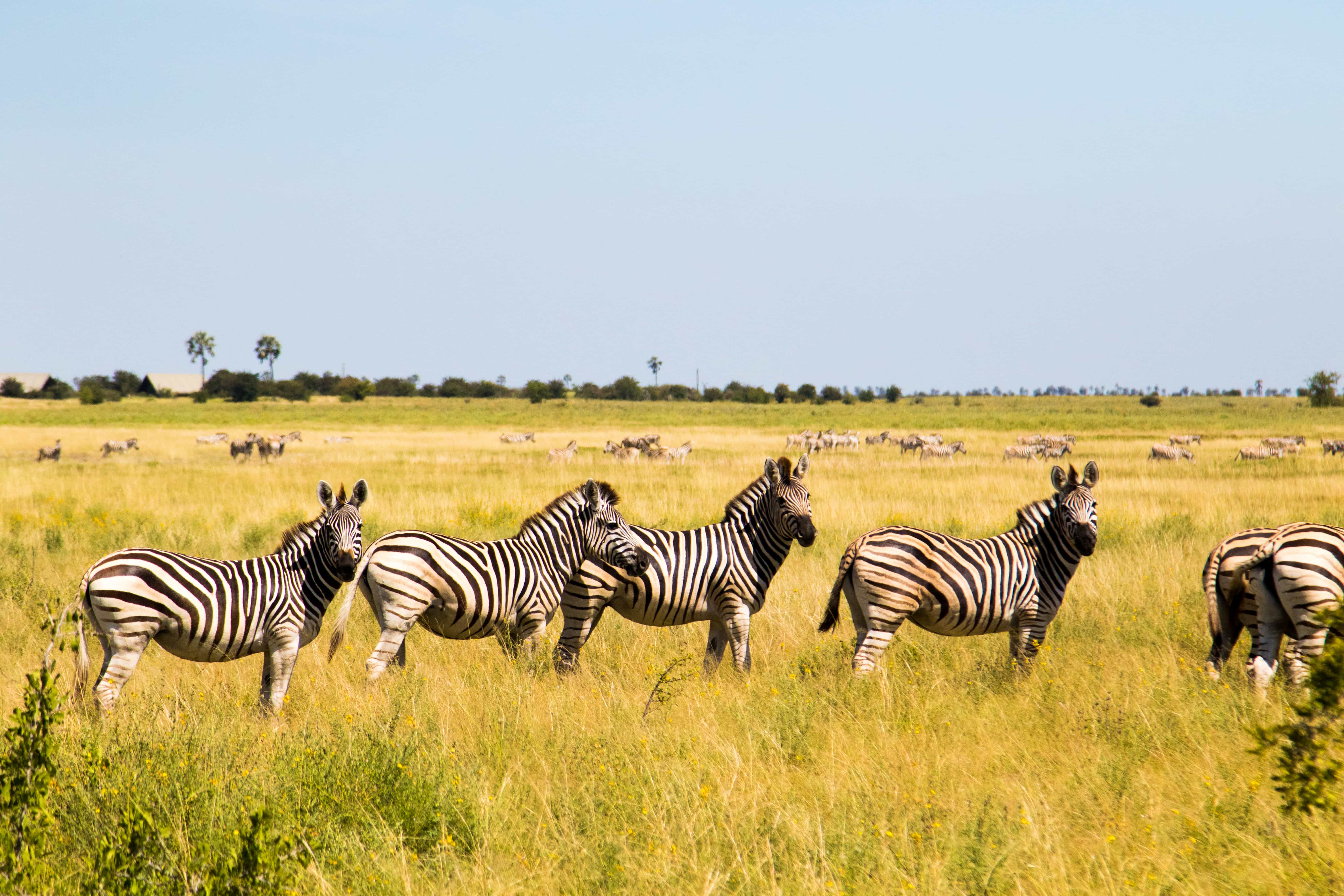The Makgadikgadi Pans Game Reserve – with an area of 3,900 sq. km – incorporates the western end of Ntwetwe, featuring extensive grasslands and acacia woodland. It meets the Nxai Pan National Park, separated by the Nata-Maun Road at its northern boundary.
This reserve offers good wildlife viewing in the wet season, particularly when great herds of zebra and wildebeest begin their westward migration to the Boteti region. Other species include gemsbok, eland and red hartebeest, kudu, bushbuck, duiker, giraffe, springbok, steenbok, and even elephant, with predators often trailing behind, waiting for an opportunity to strike. Patient game viewers may even spot the rare brown hyena.
Humans have inhabited areas of the pans since the Stone Age. They have adapted to geographical and climatic changes as they have occurred. Archaeological sites on the pans are rich with tools of ancient inhabitants of the region and the bones of the fish and animals they ate. Human inhabitation has continued to the present day. Several villages, including Mopipi, Mmatshumo, Nata, Gweta and Rakops, are situated on the pans' fringes.
Activity highlights in the Makgadikgadi Pans Game Reserve are as follow:
- Quad Biking
- Walk with meerkats
- Game drives
- Sundowner in the pans
Baines' Baobabs
Situated approximately 30 km from the entrance to Nxai Pan National Park, Baines' Baobabs are a highlight for any visitor travelling in this part of Botswana. This site features seven gigantic, gnarled baobab trees, named after the 19th-century explorer Thomas Baines. Baines stood on the promontory overlooking these baobabs and Kudiakam Pan over a hundred years ago and painted the scene. This view remains unchanged today.
Thomas Baines was an explorer, artist, naturalist and cartographer. He and fellow explorer James Chapman travelled through this region during their two-year journey from Namibia to Victoria Falls (1861 to 1863). They travelled in horse-drawn wagons and on foot, accompanied and led at different times by Hottentots, Damaras (a tribe from Namibia) and San. They encountered numerous difficulties, including the harshness of the desert, thirst, hunger, illness, and more than once, desertion by their guides, who abandoned them with no supplies.
Despite all this, Baines' account of the journey is filled with appreciation of Africa's beauty. 'I confess,' he wrote, 'I can never quite get over the feeling that the wonderful products of nature are objects to be admired rather than destroyed; and this, I am afraid, sometimes keeps me looking at a buck when I ought to be minding my hind-sights.'
Baines' painting of the small island of baobabs shows covered wagons, people tending their horses, and a colossal baobab bursting with leaves. 'We walked forward to the big tree, the Mowana at Mamu ka Hoorie, and found the country much improved,' Baines wrote of the gloriously shaded area.
Baines' diaries, sketches, drawings and paintings provide fascinating first-hand documentation of a decisive era in Southern Africa's history.















